Categories
Latest Updates
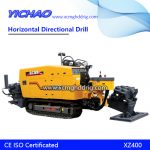
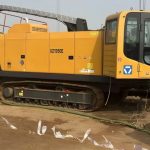
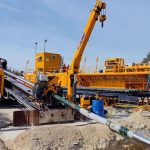
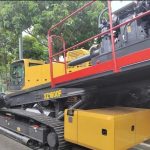
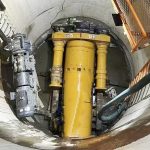
In the process of gas pipeline construction, due to the existence of some obstacles, the construction difficulty has increased. In this context, many gas companies have paid more and more attention to the horizontal directional drilling technology, which has gradually become one of the most important technologies at present. First, based on this, the research in this paper has certain guiding significance for our practical work.

Horizontal directional drilling is mainly to install controllable trajectory application directional drilling rigs in different strata and depths, and use the steering instrument to track and guide, so as to realize the laying of soft-starting pipelines. In the system of directional drilling rigs, the steering system is very important. After reaching the target, its wedge-shaped drill bit will be transformed into a conical reamer, which can not only help us expand the hole to the required diameter, but also successfully pull the pre-embedded Pipe to the pre-drilled hole, the whole process, the force will be transmitted from the drill pipe to the drill bit.
In the process of using horizontal directional drilling for construction, there are many difficulties, these difficulties have caused great obstacles to our work, and the influence of external uncertain factors is one of them. Specifically, the external uncertain factors can be divided into two aspects: first, the geological conditions are easy to change, the soil layer is relatively loose and easy to collapse, the hardness is inconsistent, and it is likely to encounter some obstacles such as pebbles, rocks, etc.; second, In the process of construction under the city, due to the existence of criss-crossing pipelines, this leads to artificial obstacles. Therefore, we must do the corresponding preparations before construction, so that we know the changes of the underground soil layer and the distribution of pipelines well, so that we can reasonably design the drilling trajectory and take some corresponding technical and industrial measures to ensure that Safety and smoothness of rig work.
According to the possible difficulties in the horizontal directional drilling construction process, the author summed up the following precautions based on his own work experience. Doing these work well will greatly promote our work.
Generally speaking, we can use horizontal directional drilling in sandy soil, clay or rock sites with low hardness. Therefore, we should try to avoid using horizontal directional drilling technology in some hard rocks such as pebble layers. . If this technology must be used, some reasonable safeguard measures should be taken, such as precise guidance and control for the geological conditions such as the pebble layer, and the mud configuration should be strengthened, and reasonable excavation should be used at the submerged position. technology to excavate.
The first step is to carry out detailed geological exploration work. This is especially important for some construction projects with large pipe diameters and long distances, because to a certain extent we can think that the exploration work determines the drill bits and reamers used in the construction. If the geological exploration work is not done well, it will not only lead to relatively large economic losses, but also affect the progress of the construction project, and in severe cases, it will also cause relatively large safety risks. In the process of measurement, we must first measure the geological composition of the crossing section to find out the geotechnical composition that may be encountered. The second is to measure various pipelines. According to relevant survey data, the positioning of pipelines is often one of the most worrying issues for our construction units. In this regard, we can consult the municipal management department, or consult the construction unit on the location of the pipeline according to the signs on the ground.
After completing the positioning and guidance, the owner, the supervisor and the construction party should check and review whether the crossing trajectory conforms to the original design. If there is a problem in this process, we will take certain remedial measures. Specifically, if the change of the crossing trajectory is encountered in the actual construction process, appropriate reaming steps should be taken after the design unit determines the crossing trajectory.
Since track bending is a common problem in the construction of horizontal directional drilling, we must ensure the flexibility of the material in the process of selecting the material of the pipe, just like a steel pipe. In addition, for the steel pipe material, it is necessary to ensure not only its corrosion resistance, but also its strength and wear resistance. Of course, we also have to do a good job of checking the pipe material and the thickness of the paint coating to ensure that it meets our construction standards.
Generally speaking, the site width should meet the requirements of 12 meters to 18 meters, and all pipes can be laid down as the standard. The welding and ball passing of the pipeline should be completed before the back towing, and the continuity should be maintained during the whole process. In the process of pulling back, the connection of the pipeline should also be avoided, otherwise it is likely to cause the collapse of the underground hole.
Since it is difficult to find the place where the pipeline is placed in the urban area, it is better to use the “two-by-one” scheme, which is mainly to weld and test the pipeline in two parts that need to be crossed. When dragging back, first drag in a section, and then drag the other end in for welding. In this process, the biggest risk is whether the interface welding, flaw detection and anti-corrosion work can be completed within the standard time. Specifically, the time of the back towing should be less than 4 hours to avoid the increase of the back-to-back force caused by the time of back towing, otherwise it will have a great impact on our work.
First of all, we must strictly control the welding quality. This is because the burial depth of the horizontal directional drilling through the pipeline is insufficient. If there is a fault, it is difficult to repair. In this regard, the quality must be higher than the main line inspection. passing grade.
Second, cathodic protection should be done during the construction process. This is because the anti-corrosion filling should be adopted for the material of the pipeline. In this process, double polyethylene shrink sleeves should be used for anti-corrosion protection of the filling to prevent the pipeline from falling off during the pipeline pulling process. .
Third, after inspecting the pipe material to ensure that it is qualified, a pressure test should be carried out. Before the pressure test, the influence of the external temperature should be fully considered to avoid inaccurate test results.
Horizontal directional drilling has great advantages in the construction of gas pipelines, and will inevitably be more widely used in the future.
